Is it too soon to discuss the Colorado Avalanche’s loss to the San Jose Sharks in the second round of the Stanley Cup Playoffs? Probably. But with preseason games already running through their paces, it’s the perfect opportunity to assess what changes could help the Avalanche go deeper into the playoffs this season and whether they are moving in that direction.
Lesson #1 – Quality Depth is Crucial
The Avalanche had a quality team last season but injuries took their toll, as happens with many playoff teams. Over the summer, news trickled out that defenseman Erik Johnson needed shoulder surgery and had been playing injured since November. Fellow blueliner Ian Cole needed surgery on both hips this offseason. And forward Colin Wilson also endured offseason shoulder injury. That’s just the publicly known issues. All three played throughout the seven-game series.
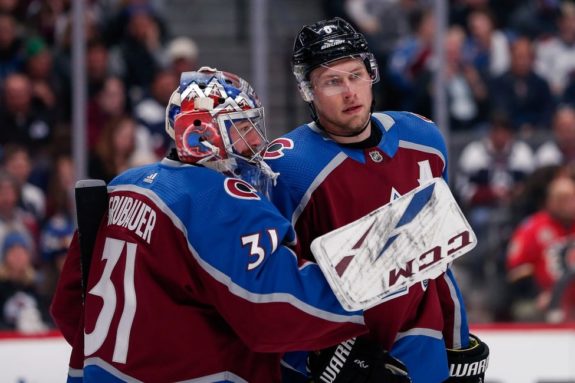
Scrappy forward Matt Calvert wrestled with an upper body injury which forced him to miss the last three games of the series and four of the seven overall. Previously benched Sven Andrighetto filled in for two games before head coach Jared Bednar decided to play with seven defensemen and eleven forwards in the last two matchups, adding blueliner Patrik Nemeth to the starting roster.
Left wing Gabriel Bourque stepped up to help the club, skating in every postseason contest. Despite his best efforts, he registered only three shots on goal (SOG) and earned one point during the seven games. Trade deadline pickup forward Derick Brassard only managed five SOG and also tallied a point. For comparison, only one defenseman logged fewer shots on goal than Brassard and that was Samuel Girard, who was also battling back from an injury that caused him to miss three first-round matchups against the Calgary Flames.
The Avalanche lacked the skilled depth players to step in and make a difference when the injuries started to pile up. Half the blue line was dealing with injuries that were made public. There’s no way of knowing how many other skaters were playing through problems. One can reasonably expect forward Mikko Rantanen was not quite 100% after getting injured in late March and missing eight games. Does anyone really think captain Gabriel Landeskog was fully healthy when he rushed back from injury to help the final playoff push?
How different would things have looked if the Avalanche had just two more talented depth forwards and two additional skilled defensemen to step in and cover for the injured?
Depth matters. Quality depth can make the difference between missing the playoffs and winning the Stanley Cup. St. Louis Blues goaltender Jordan Binnington started last season playing for the Blues’ AHL affiliate. He lifted the Stanley Cup at the end of the season.
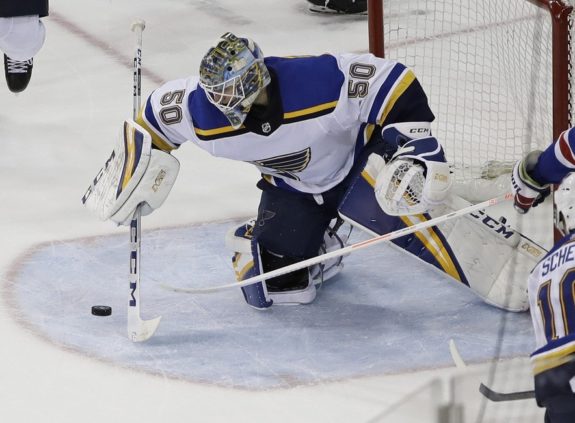
Give the Avalanche credit. General manager Joe Sakic saw the need for more talent and he went after quality players. They made a substantial offer to the summer’s most prized player, Artemi Panarin. Though Panarin chose the bright lights of the Big Apple, the Avalanche picked up Nazem Kadri, Joonas Donskoi, Andre Burakovsky, and Pierre-Edouard Bellmare to fill the forward holes. Plus, they have a stable of young forwards waiting in the wings, working towards earning a roster spot.
Sakic also picked up help for the defense, selecting Bowen Byram fourth overall in the NHL Entry Draft and getting Calle Rosen as part of the Kadri-Tyson Barrie trade. The preseason games will showcase some developing talent for the blue line. It’s strange to realize some quality players may not make the starting roster this season, but it’s a good sign that the Avalanche front office learned their lesson from the Sharks series.
Lesson #2 – Power Play Needs to Adapt
The Avalanche started the season with one of the most effective power plays in the league. However, as the season wore on, more teams learned how to disrupt the Avs’ initial strategy. Instead of shifting their approach, they kept rolling out the same system. Their effectiveness waned. While the Avalanche finished with the seventh-most effective regular-season power-play numbers, their hot start masks the decline.
The man advantage can be critical to postseason success. For a team that drew the third highest penalties, the power play should be a key weapon against opponents. Unfortunately, when it came time to play the Sharks, the Avalanche scored only twice on the power play in 23 opportunities over the course of the seven games. The Sharks, however, shut them down 21 times, and most importantly, kept them from scoring on the man advantage for the last three consecutive games. This could have been a difference maker for the series’ outcome.
The Sharks’ ability to shut down the Avalanche power play highlights a key concern. Not only was the man advantage negated, but Colorado didn’t adapt after the Sharks proved capable of stifling them.
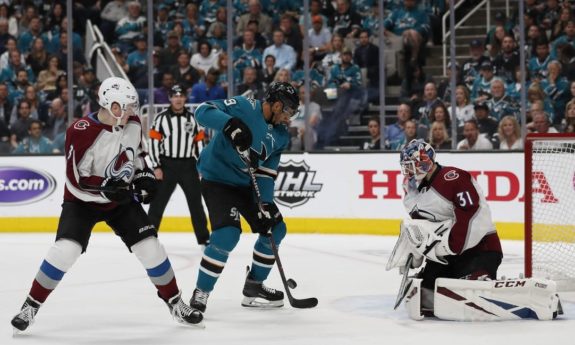
This might be less concerning if it was just that the Sharks excelled. However, in the 2018-2019 postseason, the Avalanche scored only twice on 20 power play opportunities against the Nashville Predators. Only two other playoff teams were less effective on the man advantage in the 2019 Playoffs.
The Avalanche have to recognize the problem and show they can adapt. While personnel plays a part, the inability to adapt when teams adjust rests squarely on the shoulders of the coaching staff.
Unlike the offseason depth acquisitions, the Avalanche didn’t publicly address their power play issue. They didn’t hire any special teams guru nor did they acquire any consultant to address the matter. Maybe they believe changing players will fix the problem, but an inability to adapt when new systems disrupt the team’s strategy indicates a coaching issue. So far, that remains a big question.
Lesson #3 – The Top Line Rocks
People complained about the amount of ice time given to the Avalanche’s top line of Gabriel Landeskog-Nathan MacKinnon-Mikko Rantanen. But they are really good. It’s hard to fault Bednar for giving them extra shifts in the playoffs.
MacKinnon is a beast, Nate the Great. He had 31 SOG over the course of the series and had two games where he managed seven shots apiece. He scored three goals (tied for first in team goals) and racked up five points (also tied for first).
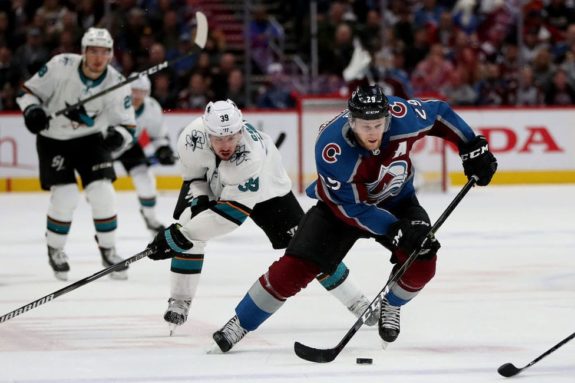
His linemates are no slouches either.
Landeskog tied for second in points with four, off two assists and two goals. He made 15 hits, second among Avalanche forwards. He also blocked 11 shots, to lead the forward corps and he trailed MacKinnon for second place in total SOG with 18.
Rantanen tied MacKinnon for total points with five. He also tied with rookie defenseman Cale Makar for most assists on the team with four and tied for fourth with hits by the Avs’ forwards. However, he was eighth on the team in SOG and he only blocked three shots. He has some room to improve. He was walking around with a boot on his foot midway through the summer, though, so that could explain some of his numbers.
The trio combined for one-third of the Avalanche’s goals and 23.3% of assists. Not bad for a top line that didn’t get a single postseason award.
Lesson #4 – Expect Surprises
Some players earn a reputation for being average during the regular season while shining in the playoffs. Others launch into the scene and reveal the greatness within. Forward Tyson Jost could be the former while Makar proved to be the latter.
Jost tied MacKinnon for first in goals scored with three tallies. He also added an assist which tied him with Landeskog and Makar for second on the team in points (with four). He took more shots than Rantanen and was dynamic on the ice. He found another level to his game against the tougher competition. The real question is whether that will carry that forward into this season.
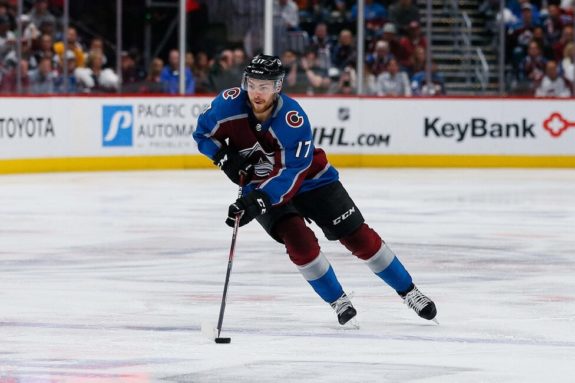
The second surprise was the vibrant play of rookie newcomer Makar. The young college defenseman who made his NHL debut during the postseason played with skill and speed. He earned four assists (tied with Jost and Landeskog for points). He had the same number of shots as Rantanen and he proved he could disrupt opponents with his high hockey IQ and quick stick. Makar exceeded expectations. Hopefully, he can carry that momentum into the regular season.
Both players provided a much needed spark against the Sharks and could be key pieces moving forward.
Poised for Change
Hopefully, the Avalanche learned a few lessons from the Sharks series. Against such an evenly matched opponent, where the Avs were only outscored by two goals over the course of the series, little things can make a big difference.
The front office addressed the need for quality depth. There’s hasn’t been any additional coaching news so the power play’s postseason collapse remains a lingering question. The Avalanche’s top line earned their kudos with a little help from players like Jost and Makar
Who will step in to help make the necessary improvements to go deeper into the playoffs? The preseason games could offer a glimpse but the rest will play out in 2019-20.